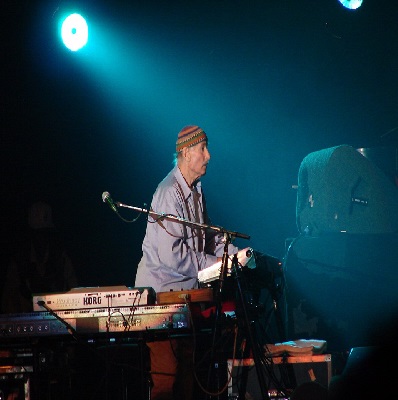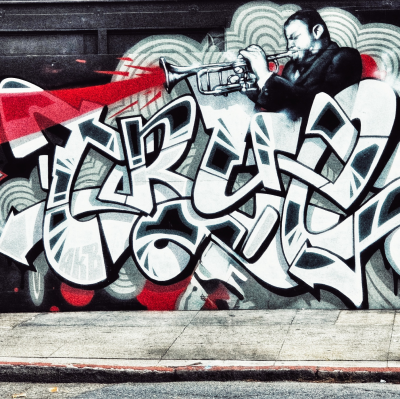Bill Evans (1929 – 1980) played a major role in the history of modern jazz. The New Jersey-born pianist’s groundbreaking ideas were so widely absorbed by his peers and subsequently by every new generation of musicians that he can be classed among the most influential figures in post-war jazz, ranking alongside Thelonious Monk, Charles Mingus, Miles Davis, John Coltrane, Charlie Parker and Dizzy Gillespie.
Evans was the pianist on Davis’ classic Kind of Blue album and a key figure in the development of modern jazz. Author Keith Shadwick’s Bill Evans: Everything Happens to Me details Evans’ wide-ranging and absorbing career, from freelance work in the fifties, through his groundbreaking trios and solo records, to his intense final phase.
Via e-mail, Shadwick answers a handful of questions about Evans’ brilliant career.
*
“My creed for art in general is that it should enrich the soul; it should teach spirituality by showing a person a portion of himself that he would not discover otherwise… a part of yourself you never knew existed.”
– Bill Evans
__________________________________________
JJM Who was most influential in Bill Evans’ life in terms of getting him interested in piano?
KS Probably his older brother, Harry.
JJM How important was Nat Cole to Bill Evans?
KS Evans adored Cole’s playing and recognized him as a master pianist.
JJM How did Bud Powell’s playing influence Bill Evans?
KS It would seem that Evans most admired Powell for his grasp of form, his unique compositional gifts and his unquenchable creativity. Evans said repeatedly throughout his life that no one person influenced him over all others, that he assimilated ideas and techniques from a vast kaleidoscope of musicians and composers both inside and outside of jazz.
JJM You write, New Jazz Conceptions conclusively demonstrated Evans to be a highly competent and sophisticated modern jazz pianist with a definite compositional gift.” Why didn’t Evans make another album for over 2 ½ years after New Jazz Conceptions?
KS According to his producer Orrin Keepnews, Evans felt he didn’t have anything new to say during that period. It was a period of rapid musical growth and Evans was probably waiting until his approach had crystallized.
JJM What recording served to establish Evans as a significant pianist?
KS Under his own name, probably the Riverside album, Everybody Digs Bill Evans.
JJM Was Evans awed by playing with Miles Davis and his group, who Evans considered to be “giants?”
KS He was a little intimidated at first, but quickly adjusted. He was particularly good friends with Philly Joe Jones, who soon left, and recorded separately with Cannonball Adderley, but got on with all the members of the group.
JJM How did Evans’ work with Miles Davis affect the way he would play ballads throughout his career?
KS I think very little. Check his ballads with Mingus. He was a consummate sideman, able to fit with whatever a leader wanted.
JJM What lasting effect did Kind of Blue have on Evans’ work?
KS Evans claimed repeatedly in later years that Kind Of Blue was “just another date” for the band when they cut it in 1959, and nobody had any idea that it would have such an impact. The lasting effect on Evans’s life was probably more in terms of others’ perception of him than his own.
JJM Why did Evans leave Miles Davis after so short a stay?
KS Many reasons, both personal and musical. He’d become a junkie and had caught his first bout of hepatitis. He’d become spiritually and emotionally drained. He’d found the ‘live’ side of things quite difficult, because Miles’s group was very different playing a night at a club to when they were making records. He had reached a stage of musical maturity where he needed to start fulfilling his own needs as a leader, much as Coltrane and Adderley had at the same time.
JJM What did Evans’ work with Miles Davis do for John Coltrane’s work?
KS I’m not sure whether it was his work or his ideas that influenced Coltrane more. Coltrane became fascinated with modal playing at this time, but his application of modal theory is quite different to Evans’s.
JJM Was Evans at all influential in Coltrane’s interest in Eastern philosophy?
KS No evidence to suggest that he was. Probably a parallel shared interest.
JJM How did Evans’ simplified structure of the introduction to “Green Dolphin Street” bring a “completely new emotional and intellectual dimension to the standard?”
KS Evans abandoned conventional jazz treatment and broadened the musical horizons by incorporating theory and practice from a wide variety of sources, from classical composers to jazz theorists like George Russell and Lennie Tristano. It’s like somebody suddenly opening a set of double doors in a small room and giving those present an entirely new perspective on that room.
JJM Evans had a career long affinity with Cole Porter’s work. Why?
KS Porter was an erudite, intelligent and witty songwriter with an impeccable compositional instinct and an ability to invest seemingly superficial musical structures and melodies with immense implied emotional weight. Remind you of anybody?
JJM What was the genesis of Evans’ addiction to heroin?
KS I have no definitive answer, but the usual assumption is that he “slid” into it while with Miles, possibly to feel more “bonded”
JJM What was Evans’ favorite recording of his own work?
KS I don’t think he had a favorite, though later he was always comparing his work of the moment with what he’d achieved with Scott LaFaro and Paul Motian. He had records that he thought were more successful than others, but he was much more concerned with what he would play that night than what he’d done in the past. Many of the best jazzmen whom I’ve interviewed have a similar attitude – tomorrow’s promise is more exciting than yesterday’s certainties.
JJM How did the bassist Scott LaFaro stimulate Evans’ growth?
KS LaFaro was a tremendous creative force who was willing to enter into a no-holds-barred musical dialogue with Evans on the pianist’s terms, along with drummer Paul Motian. Up until then, Evans had not met a bassist either capable of or willing to make such an enormous input into his music.
JJM Scott LaFaro played with Ornette Coleman at the same time as he played with Evans. Did his work with Coleman have any affect on Evans?
KS Not that I am aware of. LaFaro played quite differently for the two leaders.
JJM What effect did the death of LaFaro have on Evans personally?
KS He was devastated. He didn’t play professionally for 6 months. He said later that he wasn’t sure during that period that he’d ever be able to form another trio because of the emotional pain involved.
JJM LaFaro’s death made Evans a larger figure in the jazz world. What “aura” did Evans possess beyond the musical?
KS The romance of tragedy. Un-looked for by Evans, I must stress.
JJM Evans’ philosophy included sharing the music’s spotlight. Were there artists he performed with who were uncomfortable with this?
KS Not that I am aware of. Most musicians enjoy the occasional rake of the spotlight, and musicians who Evans regularly employed were enthusiastic about what the pianist was trying to do in his groups. Evans rarely if ever played with musicians with whom he was with out of sympathy, especially after his early freelance years.
JJM What album was his most critically acclaimed?
KS An arbitrary choice, but if you measure it by the number of awards contemporaneously won, then probably Conversations With Myself, his first Grammy-winning record.
JJMYou said, “In a recording career spanning seven years (until 1961), Evans had rarely been taped on a properly tuned instrument. How could this have happened?
KS Jazz has never been a well-funded art, especially in America. Few record companies of that time had sizeable recording budgets. The smaller, independent labels who did most of the jazz recording were reliant on recording studios to have on offer a well-maintained piano. If it was out of tune when the musicians arrived to make a record, no-one had the money to burn to stall the session for an hour or so while someone sent for a tuner and got the instrument seen to. The situation was even more risk-ridden when recording live, considering the state of most night club pianos, some of which were tuned about once every two years. Only with the big record companies – Columbia, RCA, Decca – were the budgets large enough to sort such problems out in advance. This is one reason why Rudy Van Gelder got used so much by the smaller companies in the late 50s and early 60s, because he prided himself on keeping his piano in good condition. Unfortunately, the record companies Evans did most (but not all) of his records for up to 1961 were independents who didn’t use Van Gelder.
JJM How did Helen Keane’s presence change Bill Evans?
KS He got good, honest, effective management for the first time in his career.
JJM How would you characterize Evans’ work with Herbie Mann?
KS Sensitive.
JJM What was the transition between Evans’ recording for Riverside and then Verve like?
KS Seems to have been relatively smooth. Nobody argued. Both contracts were honored without undue fuss.
JJM What album of Evans’ features his most daring playing?
KS Probably Living Time, with George Russell, which was released by Columbia in 1971. But that’s just an off-the-cuff opinion. Some of his late ‘live’ recordings find him pushing the boundaries pretty daringly. Alternatively, his late-50s dates with Russell had some playing on them that was radical for the time.
JJM What is the legacy of Bill Evans?
KS There is no pianist playing in jazz today who does not acknowledge Evans in his playing, even if it’s through displaying his antithesis. Like other giants of the music, his contribution simply has to be dealt with if one is to be a competent jazz musician. It must be stressed, though, that Evans would have been the last person who wanted people to simply emulate him or his musical style. He passionately believed that it was essential for a musician to come to his own personal synthesis of all that had gone before. In that, he is very much at one with jazz tradition, from Louis Armstrong to Mingus, Miles and beyond.
__________
Everything Happens to Me – a Musical Biography
by
Keith Shadwick
________________________________
Bill Evans products at Amazon.com
Keith Shadwick products at Amazon.com
_______________________________
Interview took place via email on June 24, 2002
*
If you enjoyed this interview, you may want to read our interview with Ashley Kahn, author of The Making of Kind of Blue
*
Other Jerry Jazz Musician interviews











































